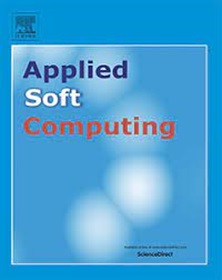An ensemble learning algorithm for optimization of spark ignition engine performance fuelled with methane/hydrogen blends
IF 7.2
1区 计算机科学
Q1 COMPUTER SCIENCE, ARTIFICIAL INTELLIGENCE
引用次数: 0
Abstract
The increasing global demand for sustainable and cleaner transportation has led to extensive research on alternative fuels for Internal Combustion (IC) engines. One promising option is the utilization of methane/hydrogen blends in Spark-Ignition (SI) engines due to their potential to reduce Green House Gas (GHG) emissions and improve engine performance. However, the optimal operation of such an engine is challenging due to the interdependence of multiple conflicting objectives, including Brake Mean Effective Pressure (BMEP), Brake Specific Fuel Consumption (BSFC), and nitrogen oxide (NO) emissions. This paper proposes an evolutionary optimization algorithm that employs a surrogate model as a fitness function to optimize methane/hydrogen SI engine performance and emissions. To create the surrogate model, we propose a novel ensemble learning algorithm that consists of several base learners. This paper employs ten different learning algorithms diversified via the Wagging method to create a pool of base-learner algorithms. This paper proposes a combinatorial evolutionary pruning algorithm to select an optimal subset of learning algorithms from a pool of base learners for the final ensemble algorithm. Once the base learners are designed, they are incorporated into an ensemble, where their outputs are aggregated using a weighted voting scheme. The weights of these base learners are optimized through a gradient descent algorithm. However, when optimizing a problem using surrogate models, the fitness function is subject to approximation uncertainty. To address this issue, this paper introduces an uncertainty reduction algorithm that performs averaging within a sphere around each solution. Experiments are performed to compare the proposed ensemble learning algorithm to the classical learning algorithms and state-of-the-art ensemble algorithms. Also, the proposed smoothing algorithm is compared with the state-of-the-art evolutionary algorithms. Experimental studies suggest that the proposed algorithms outperform the existing algorithms.
甲烷/氢混合燃料火花点火发动机性能优化的集成学习算法
全球对可持续和清洁交通的需求日益增长,导致对内燃机替代燃料的广泛研究。一种很有前景的选择是在火花点火(SI)发动机中使用甲烷/氢混合物,因为它们有可能减少温室气体(GHG)排放并提高发动机性能。然而,由于多个相互冲突的目标相互依存,包括制动平均有效压力(BMEP)、制动比油耗(BSFC)和氮氧化物(NOx)排放,这种发动机的最佳运行具有挑战性。本文提出了一种进化优化算法,该算法采用代理模型作为适应度函数来优化甲烷/氢发动机的性能和排放。为了创建代理模型,我们提出了一种新的集成学习算法,该算法由几个基本学习器组成。本文采用了十种不同的学习算法,通过Wagging方法进行多样化,创建了一个基础学习算法池。本文提出了一种组合进化剪枝算法,从基础学习器池中选择最优的学习算法子集用于最终的集成算法。一旦基本学习器被设计出来,它们就被整合到一个集合中,在这个集合中,它们的输出使用加权投票方案进行汇总。这些基础学习器的权重通过梯度下降算法进行优化。然而,当使用代理模型优化问题时,适应度函数受到近似不确定性的影响。为了解决这个问题,本文引入了一种不确定性降低算法,该算法在每个解周围的一个球体内进行平均。实验进行了比较所提出的集成学习算法,经典学习算法和最先进的集成算法。同时,将所提出的平滑算法与目前最先进的进化算法进行了比较。实验研究表明,所提算法优于现有算法。
本文章由计算机程序翻译,如有差异,请以英文原文为准。
求助全文
约1分钟内获得全文
求助全文
来源期刊

Applied Soft Computing
工程技术-计算机:跨学科应用
CiteScore
15.80
自引率
6.90%
发文量
874
审稿时长
10.9 months
期刊介绍:
Applied Soft Computing is an international journal promoting an integrated view of soft computing to solve real life problems.The focus is to publish the highest quality research in application and convergence of the areas of Fuzzy Logic, Neural Networks, Evolutionary Computing, Rough Sets and other similar techniques to address real world complexities.
Applied Soft Computing is a rolling publication: articles are published as soon as the editor-in-chief has accepted them. Therefore, the web site will continuously be updated with new articles and the publication time will be short.
 求助内容:
求助内容: 应助结果提醒方式:
应助结果提醒方式:


